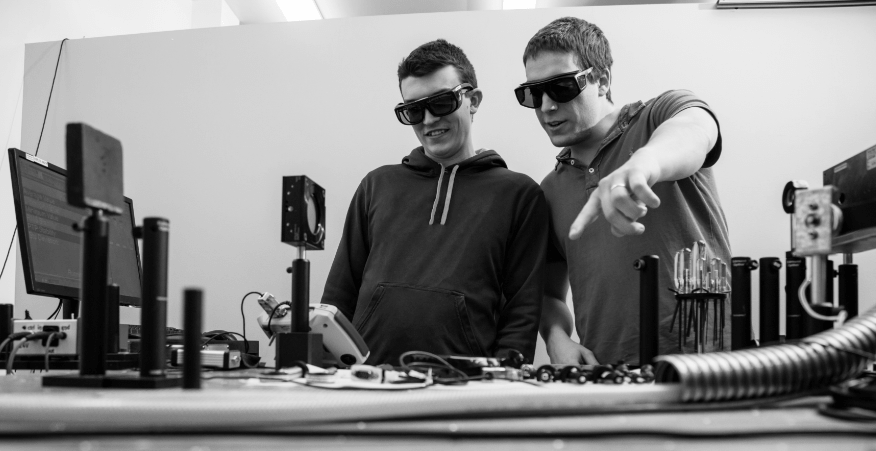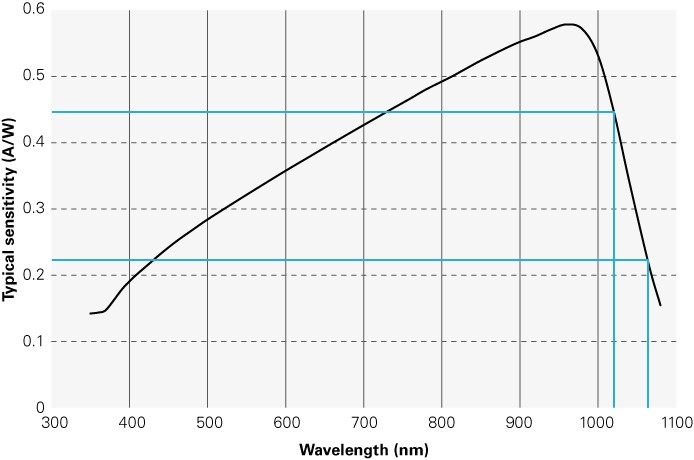6 expert tips on how to measure laser power
Friday, December 08, 2023
Friday, December 08, 2023
So, you have a laser or some other source of light, and you want to know how much optical power it emits? Maybe you need to make sure that it’s working properly, or maybe your experiment finally worked and you need to know exactly how much power you were firing on that sample to make that magic?
In any case, you aren’t too sure how to measure laser power properly. Here are a few tips from our many years of experience with laser power measurement.
First of all, any time you work with lasers or optical sources, there are basic safety rules should always apply. Even with low power light sources, please wear the appropriate safety goggles, avoid wearing jewelry (it could reflect light into your eyes), don’t place your head at the height of the optical path, and keep your workspace free of clutter.

Beware of reflections! Some materials return the light back into a diffuse pattern; some power detectors have a diffusive layer that cause back reflections!
The most accurate laser power measurements are obtained when the beam hits the center of the detector’s sensitive area. This is true for all kinds of power meters because no technology has perfect spatial uniformity. Additionally, by keeping your beam in the center, you minimize the risks of cutting off a part of the total power at the edges of the detector, and you also reproduce the calibration conditions.
Ensure you purchase the most optimal solution for your measurement needs with this checklist.
Download it now, it's helpful and free!
It’s also a good thing to check that you are aiming at the right part of the instrument. You would be surprised to see some of the repairs we have to do. The back of the detector and the display are not designed to handle the same power densities as the active measurement area.
Yes, it is important for us that we keep our planet clean and safe, but what I mean here is that you should be aware of the conditions surrounding your detector. Are there other light sources shining on your detector? Are there air currents or temperature changes? If you are making low-power measurements, these factors might add noise to your results.
The casing of a power detector acts as a heatsink to evacuate the laser power they absorb. When you pick up a detector by its casing, it heats up and you can actually see a measurement on your display as a consequence. Also, if your detector is not at thermal equilibrium when you begin your measurements, you might observe some thermal drift, which can be observed as a gradual offset from your baseline (or average) measurements.
In such a case, you need to reset the zero level of your laser power meter and start over again! Air movements can also affect measurements, so you should isolate your detector to reduce measurement fluctuations and, to a certain extent, uncertainty.
Photodiodes are less affected to temperature fluctuations, but their high sensitivity makes them susceptible to noise coming from ambient light. Use the zero function on your monitor to cancel out the background noise or use special filters to block unwanted wavelengths.
Lasers often have a warm-up phase during which the power slowly stabilizes. It can last from a few minutes to an hour. A good practice that we recommend is to start by aligning the laser on your detector and then wait for both the laser and the detector to warm up.
When this is achieved, block the laser and wait for the baseline power reading to stabilize. Use the zero function to eliminate this offset. This way, both your power measurement instrument and your laser will be ready to give you the most accurate results.
It is important to select the correct wavelength on your monitor, because the response of optical detectors is not the same for every wavelength. At Gentec-EO, we characterize this difference in the spectral response for each of the products that we manufacture, and we then use a NIST-traceable gold standard as reference.
This way, your measurements are always right on the spot. The difference in sensitivity across the NIST-traceable spectral range (roughly from UV to NIR) is saved inside a chip in the detector, and our monitors the calculate a correction factor to display the correct value at a specific wavelength. This is especially crucial for photodiodes, because their sensitivity varies greatly over the spectrum.

For example, with a silicon-based photodiode, you could get the wrong measurement by a factor 2 if you told your monitor that the wavelength was 1020 nm when it was actually 1064nm (as shown above)!
The world of laser power measurement is filled with a large variety of very specialized instruments. Each technology has its advantages and disadvantages, and not one single tool can measure all types of lasers.
The subject of choosing the right detectors is an elaborate one, which we will tackle in a future blog post. Meanwhile, you can read up on how to choose the best thermal detector for you in this technical note.
You can also ask a member of our sales team to help you out. We make sure with regular training that our representatives are able to guide you through the jungle of choices in laser beam measurement. Knowing your laser beam parameters at the point where you will be making the measurement is important if you want to have the most precise power measurement possible. We can better help you when you tell us:
All in all, you can gain a lot from collaborating with a Gentec-EO representative. By helping him, he can help you optimize your workflow and yield more from your measurement analysis.
Want to learn more about laser beam measurement? Subscribe to our newsletter to hear our best tips and know what the experts think.